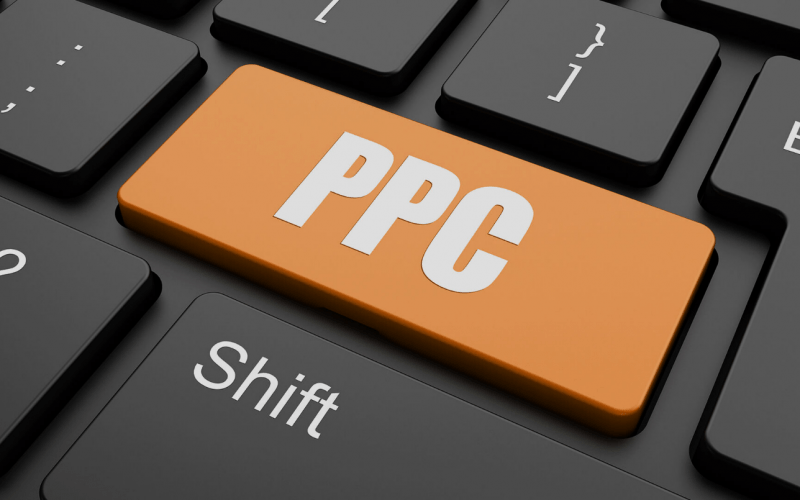
September 16, 2021
PPC is a digital marketing channel that lets businesses attract more traffic and increase conversions. So, if you are marketing for any length of time, you must consider PPC (Pay-per-clicks).
PPC is an online advertising tool that lets advertisers pay to the publisher every time their ad clicks in the Search Engine pages or to an affiliate site. So, if you came across the names like Cost-per-click (CPC), paid searches, or search engine marketing, it means PPC.
Paid search is also one of the best ways to fully traffic to a specific landing page or a complete website. However, it can be a little confusing for those who have just started. So, here’s the detailed guide on what PPC is and how you can use PPC to generate more traffic:
PPC, Pay Per Click, is an online advertising model that advertisers use to run add-on platforms like Google ads or Amazon ads. It’s an internet marketing model where the advertisers get pay for every click every time their ad is clicked. Specifically, it’s a way of having more visitors to your site than having those visitors organically. Among them, search engine advertising is one of the most popular forms of paid marketing. It let advertisers bid on the placement of an ad in the search engine.
How THE PPC MODEL WORKS:
PPC, Pay-per-click is based mostly on the keywords; for instance, in search engines, you will only see online ads when someone searches for the keyword related to your product or services. Therefore, companies rely on PPC marketing research and analyze keywords before applying them to the products and services. Furthermore, investing in high-volume keywords can result in a higher number of clicks and more profit.Following ARE FEW PAY-PER-CLICK MODELS:
Ideally, PPC advertising rates are determined by using the bid-based model or the flat-rate model.Bid-BASED MODEL:
In this, every advertiser bids with a maximum amount of money that the advertisers are ready to spend for a specific advertising spot. Then, the publisher undertakes the auction using various automated tools. Whenever a visitor looks for an ad spot, an auction takes place. Keep in mind that the auction winner will be determined by rank, not by the amount offered. Also, the rank includes both the money and the quality of the content provided by the advertiser. Therefore, relevancy is the key when biding.Flat-RATE MODEL:
In this, the advertisers pay publishers a fixed amount for every click. The publishers usually keep a list of different rates as per the location of their website. In this, the publishers are often open for negotiations related to the price. A publisher can cut the price for a long-term or high-volume contract.How DOES THE PPC MODEL WORK?
While PPC as a paid marketing channel covers various platforms, the most common of them are Bing Ads and Google Ads. The different ad formats for these channels are:- Shopping ads
- Display ads
- Search ads
- Video ads
- Gmail ads
- You must sign up as an advertising account for the platform
- Create ads by targeting relevant keywords and audience
- Set a budget that you are ready to pay for every click
- Once done, your ad will go for the auction along with other advertisers who are also bidding on the same keywords
- The auction will determine the order to display the ad
- Lastly, you will pay only when you click the ad
How DO THE AUCTIONS WORK?
When someone searches for anything, an ad auction takes place. The ad auction will then determine:- The eligibility of the account to enter in the auction.
- The right order in which the ad will appear in the space on the SERPs
- The total amount that will cost to the advertisers whose ads are showing
Benefits OF Ppc:
PPC has a plethora of amazing benefits; some of them are:- Geo-Targeting: It let you target a specific audience geographically; this way, you can ensure that you are not wasting money on visitors who are not in your desired location.
- Day-parting: This way, advertisers will be able to run their ads on specific days of the week or at particular hours.
- Device Targeting: In this, you will be able to target an audience who are on a particular device. It could be desktop/laptop or tablets or smartphones.
- Keyword Relevancy/Control: You can control how you want to show your ads. For instance, in the sponsored search, the ads are shown based on a query that is typed in the search box. However, in the display ads, the keywords become important.
- Demographic Targeting: On the display targeting, you also have the option of demographic targeting. You can reach the right audience by targeting people by gender, age, job, household income, interests, and even parental status. These are ascertained through cookies, which means when a visitor lands on a specific site, the device they are using gets cookies, which follow them through their web travels.





